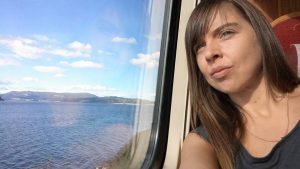Sea lice Lepeophtheirus salmonis are an important ectoparasite affecting farmed Atlantic salmon. The impact of sea lice on Norwegian salmon farms was recognized as early as the 1970’s. Ever since, efforts to improve management practices and develop  methods to reduce sea lice infestation have been the focus of government, researchers, and industry alike. To this end, strategies for farm level intervention to control sea lice infestations have diversified to include specific treatment strategies and technology. These new management techniques and technologies require increasing knowledge of sea lice population structure and dynamics. The Norwegian sea-lice surveillance system includes mandatory data collecting and reporting, which enables the construction of rich data sets that characterize sea lice counts.
methods to reduce sea lice infestation have been the focus of government, researchers, and industry alike. To this end, strategies for farm level intervention to control sea lice infestations have diversified to include specific treatment strategies and technology. These new management techniques and technologies require increasing knowledge of sea lice population structure and dynamics. The Norwegian sea-lice surveillance system includes mandatory data collecting and reporting, which enables the construction of rich data sets that characterize sea lice counts.
The STRP grant allowed me to visit Norwegian salmon farms and research stations, from September 3 to 11, 2017. The salmon health researchers and experts explained the data for the purpose of sea lice reporting, and we discussed goals of future research projects and supporting data analysis techniques. The specific need for the application of statistical techniques for pattern discovery in sea lice data was identified to fulfill the goal of better understanding the population dynamics within the farm and better evaluate the results of technology and preventive measures to control within farm spread of sea lice.

Landscape of Norwegian fjords


